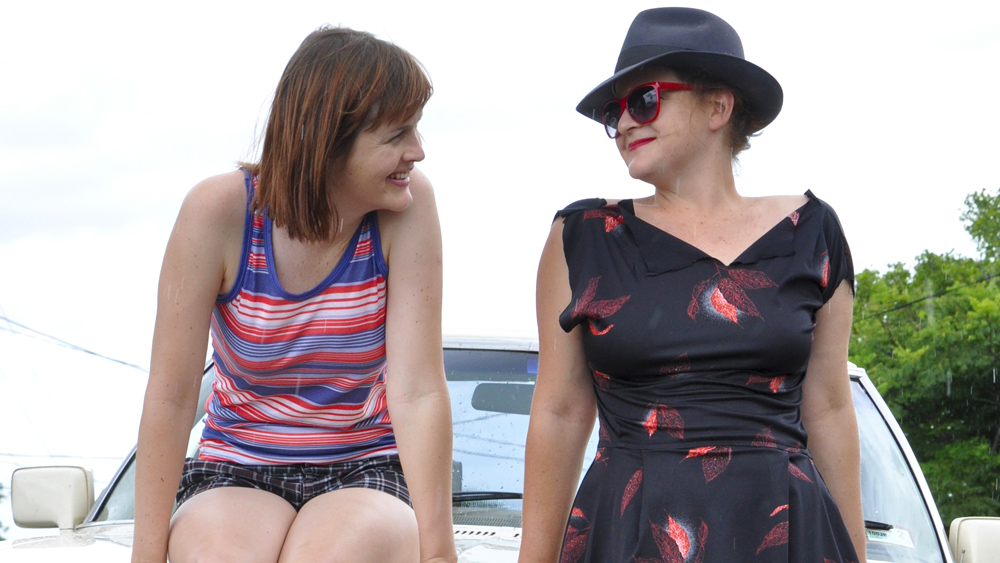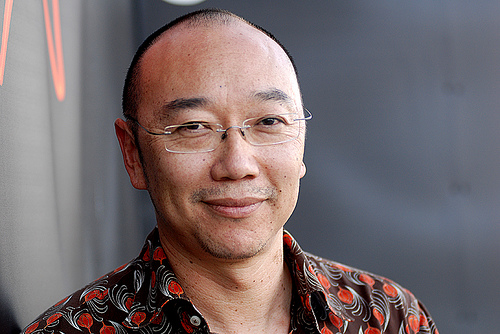THE HISTORY OF LGBT CINEMA IN AUSTRALIA (PART 2)
 Friday, May 25, 2012 at 10:18AM
Friday, May 25, 2012 at 10:18AM In part 2, SCREEN-SPACE examines the coming-out of gay- and lesbian-themed works from the 1970's to the present day. (Read part 1 here)
 (Pictured, Phoebe Hart's Orchids: My Intersex Adventure, 2010)
(Pictured, Phoebe Hart's Orchids: My Intersex Adventure, 2010)
Several films from the much-lauded ‘renaissance’ period of Australasian filmmaking touched on homosexual ambiguity - Peter Weir’s Picnic at Hanging Rock (1975) and Bruce Beresford’s The Getting of Wisdom (1978) employed corseted yet lilting explorations of hidden and unrequited same-sex longing; Tom Cowan’s Journey Among Woman (1977) drew strength and unity from female partnerships; New Zealander Richard Turner’s Squeeze (1979) was a bold experiment in homosexual cinema from the small Kiwi film community; Fred Schepisi’s The Devil Playground (1976) potently mixed Catholic guilt, teenage confusion and repressed homosexuality
Schepisi, however, upset gay audiences with his 1978 film The Chant of Jimmy Blacksmith, in which an elderly homosexual was portrayed as a predatory aggressor. Gay characters as evildoers onscreen is not particularly endemic to Australian cinema, but our filmmakers are as guilty of it as any other nations, amongst them Igor Auzins (High Rollin’, 1978), David Barker (The Great McCarthy, 1975) and Dr George Miller (Mad Max II, 1981).
Whilst it is true that the 1970’s was a time of expanding cultural tolerance, of pushing the boundaries of acceptable social issues onscreen, this often manifested itself in crude representations of how ‘Ockers’ saw gay Australia. Bruce Beresford’s The Adventures of Barry McKenzie (1971) and John D Lamond’s Felicity (1978) and The ABC of Love and Sex: Australian Style (1978) all presented queer living as the strangest of alternatives to mainstream society; Peter Bernardos’ bigscreen version of the hit TV series Number 96 (1974) took an each-way bet, featuring a camp caricature in Dudley Butterfield (Chard Hayward) and an urbane gay lawyer in Don Finlayson (Joe Hasham). Alternatively, positive representations of gay culture could be found in such underground hits as Pride and Snide (1973) and Paul Bugden’s Adam (1975).
The 1980’s saw a major shift in the profile of gay culture in Australia, accompanied by a wave of exciting gay filmmaking talent. In 1982, anti-discrimination laws were introduced (Susan Lambert’s On Guard, 1983; Noellie Taylor’s Even Cowgirls, 1985; the works of Franco Di Chiera); in 1983, the AIDS epidemic began to impact the gay community (George Pugh’s AIDS, 1985; Bob Huber’s Understanding Sexuality, 1986). The Mardi Gras had mobilised the gay masses following a 1977 Sydney screening of the US documentary Word is Out; by the early 1980’s, its associated events, including the constantly-evolving film festival sidebar, became the frontline in the dissemination of information pertaining to the increase in mainstream acceptance of LGBT culture. Richard Turner documented the Mardi Gras parade in his landmark documentary We’ll Dance if We Want To (1984).
But without a doubt the greatest achievement of this 1980’s period in LGBT films was the foundation it laid for the familiarity and acceptance of gay characters on screen. At the start of the 1990’s, almost every Australian capital city had its own gay-themed film festival. In 1993, American comedienne Sandra Bernhardt travelled to Australia to star in Ann Turner’s lesbian-fish-out-of-water comedy, Dallas Doll, and audiences flocked to see Baz Luhrmann’s flamboyant Strictly Ballroom; Ruth Carr’s Mimi Pulka was Australia’s first indigenous lesbian-themed feature. Then, in 1994, the Australian mainstream audience came out to embrace homosexual characters and gay-themed storylines – it would be the year of Stephan Elliott’s The Adventures of Priscilla Queen of the Desert, Geoff Burton and Kevin Dowling’s The Sum of Us (pictured, left) and PJ Hogan’s kitschy, thinly-veiled same-sex relationship smash Muriel’s Wedding.
A gay sensibility had infused the production sector and audiences alike – this was the time of Emma-Kate Croghan’s Love and Other Catastrophes (1996), Lawrence Johnson's Life (1996), Anna Kokkinos’ Head On (1998) and Samantha Lang’s The Well (1997) and Monkey’s Mask (2000). It was not all good news for the gay cinema industry over this period; in 1995, twelve films screening at Tasmania's Queer Film Festival, including Spikes and Heels, Coming Out Under Fire, What a Lesbian Looks Like, Mad About the Boy, 21st Century Nuns and Sex Fish, were banned outright by the only state that (at the time) still outlawed consensual sex between age-appropriate men. But that was a blip on the radar from a decade that saw homosexual cinema conclusively enter the mainstream cinema-going habits.
 The past decade began with Tony Ayres' (pictured, right) Walking on Water (2002), a bittersweet tale of friends dealing with the death of one of their own by AIDS. Ayers has been a leading figure in gay Australian cinema – he produced the 1991 documentary Double Trouble, which examined the multi-faceted prejudices faced by LGBT Aboriginals, inspiring similar works from Reno Dal (Voices, 1997) and Lou Glover (Black Sheep, 1999); he would also produce the documentaries China Doll (1997) and Sadness (1999), which examined the lives of gay Asian Australians.
The past decade began with Tony Ayres' (pictured, right) Walking on Water (2002), a bittersweet tale of friends dealing with the death of one of their own by AIDS. Ayers has been a leading figure in gay Australian cinema – he produced the 1991 documentary Double Trouble, which examined the multi-faceted prejudices faced by LGBT Aboriginals, inspiring similar works from Reno Dal (Voices, 1997) and Lou Glover (Black Sheep, 1999); he would also produce the documentaries China Doll (1997) and Sadness (1999), which examined the lives of gay Asian Australians.
We are seeing a new dawning of equally-committed LGBT filmmakers – creatives who grew up through the impassioned emergence of gay cinema in the 80’s and 90’s. Phoebe Hart’s documentary Orchids: My Intersex Adventure (2010) chronicles Hart’s journey of self-discovery; Robert Chuter’s The Dream Children (2011) examines the adoption process as it affects the lives of two gay men who want to have a child; and the annual Mardi Gras Film Festival effortlessly programs diverse Australian short films from a wide-range of talented, emerging directors.

Reader Comments